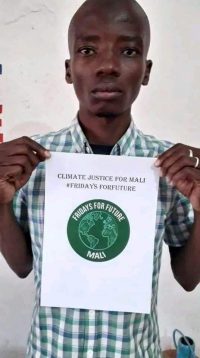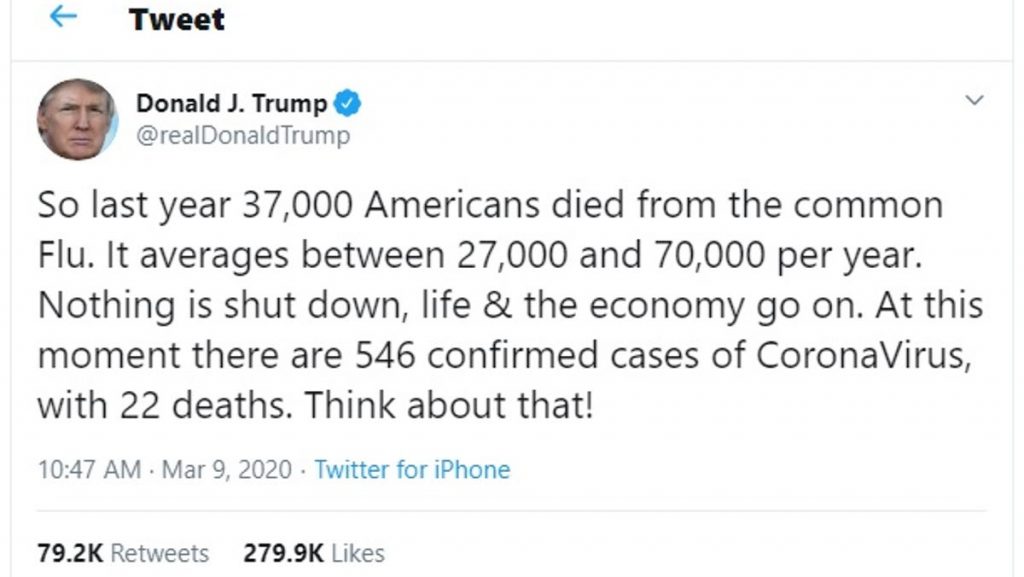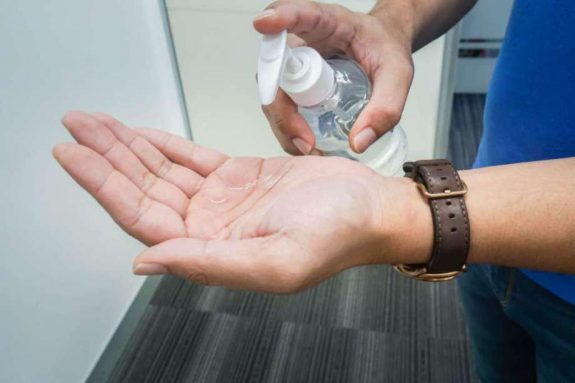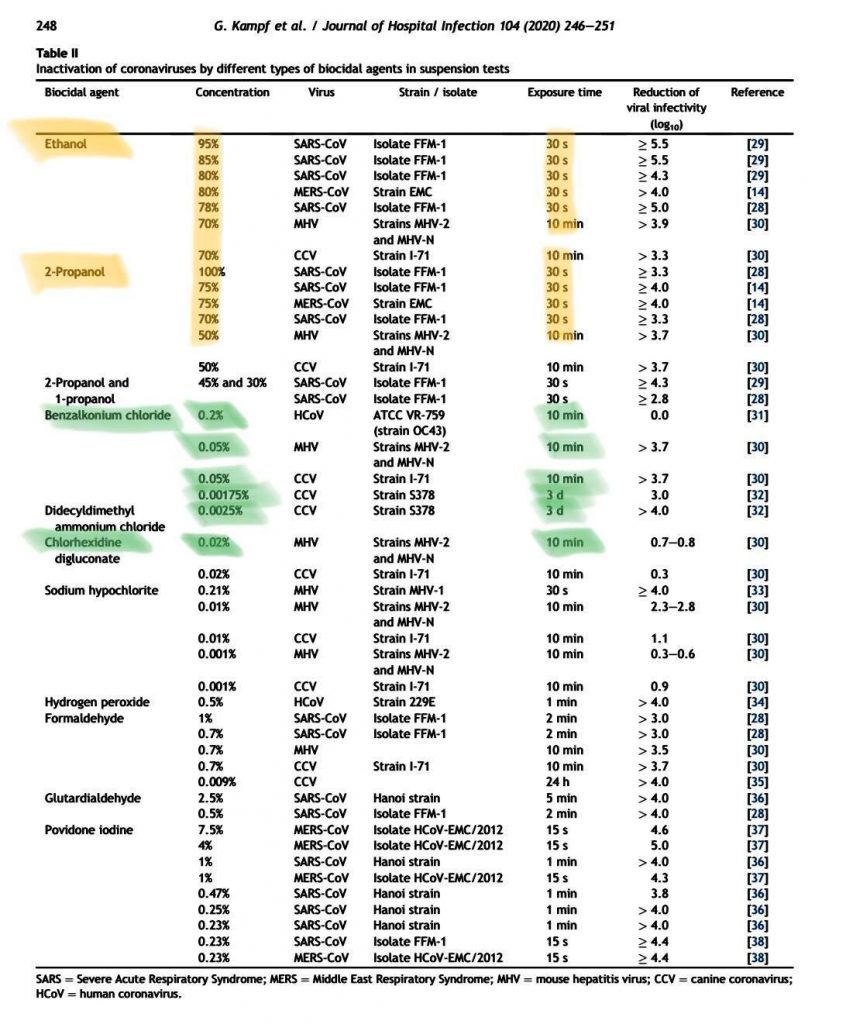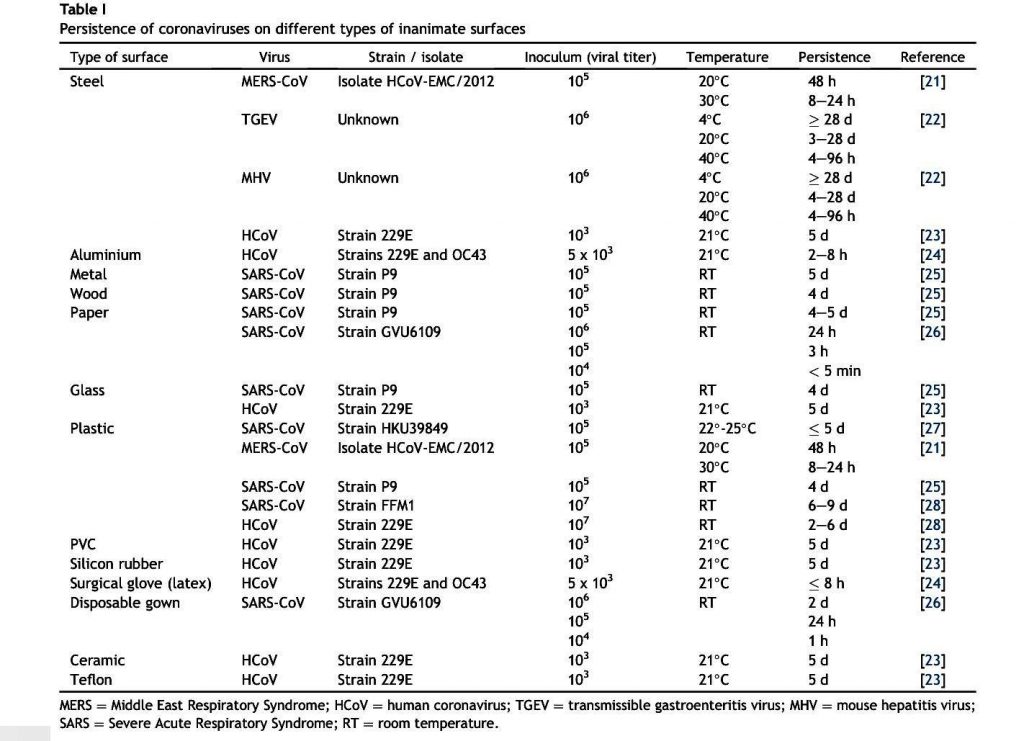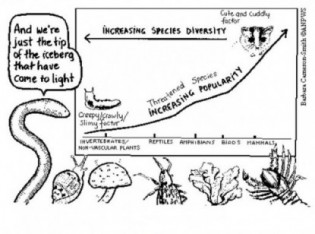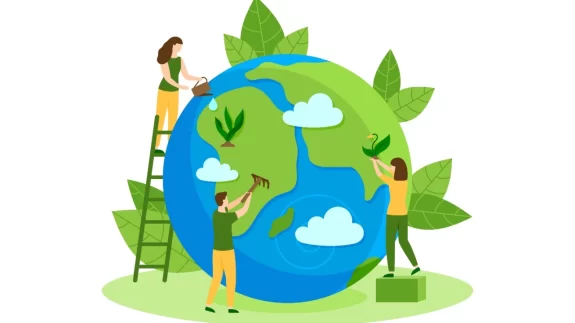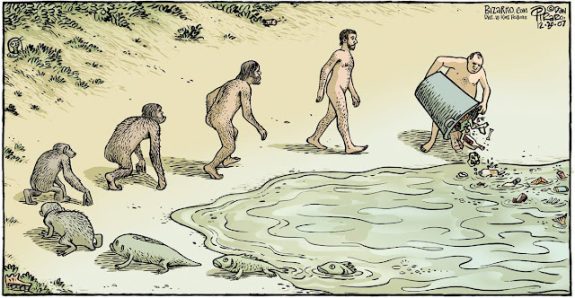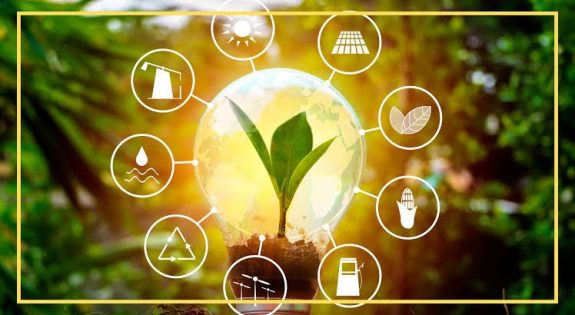Shark ecotourism – The no bull shark approach
Two weeks ago I was assigned the task of writing up a ‘mock briefing’ as part of one of my subjects at university. I was given the topic ‘Is shark ecotourism teaching sharks to hunt humans?’ I performed a quick Google search and scoured Wikipedia for some general knowledge on the subject. Yes, Wikipedia! It’s no secret that even scientific professionals will consult Wikipedia for a well laid out easy to read concept- before seeking the crux of deeper knowledge of scientific journals and peer reviewed books – our most trusted and trialed order; the scientific sophistication the likes of which Wikipedia will never replace. But something shocked me, Wikipedia didn’t have anything on shark ecotourism. And I wondered why? Then I adjusted my search to say, ‘shark tourism’, ‘finally’, I thought, ‘some facts that the public has access to’. However, I was shocked; the whole definition is half a page long! There are missing citations and there is no information on it. I felt it was almost deliberate! I had this overwhelming sense of discontent; it would appear the public is blissfully unaware of both the benefits of shark ecotourism and the myths surrounding shark ecotourism. And … like the proverbial dribble that shrouds our crackpot science minister (or lack thereof) total (but blissful) ignorance ensues. With such uncertain frames of mind surrounding the myths of sharks and shark attacks, it’s a no wonder members of the public and private sectors have sensationalised beyond provision!
There are whole pages and completely ‘personal’ accounts of why sharks are dangerous, or why sharks are bad, or why some over stimulated sensationalist maniac ‘won’t dive with sharks’. The appalling monstrosity of modern ‘opinion’ blankets the foundations of knowledge, and it drips into every avenue and gets so caught up, sometimes the truth is barely heard.
Not surprised, I braved the social media network and asked a few discerning questions about sharks, and the avid responses that came back, shook my blood and bones and you may as well have left me for dead. With conviction, I kept my cool and asked such questions ‘do you think sharks are learning to hunt humans?’ ‘Do you think sharks should be culled because shark attacks have increased since sharks have found a taste for human blood?’ I writhed inside as I asked these questions, but it had to be said, the whole thing just had to be said. Responses included ‘yes of course, what about those guys who were hunted and all of those surfers, you know those guys that got killed whilst surfing, they are definitely learning to hunt humans those things are crazy, they definitely need to do that culling sorta thing’. I couldn’t think of any story or specific time or date where these ‘crazy attacks’ took place and certainly couldn’t deduce much from the aforementioned opinions of my fellow human beings.
Ladies and Gentlemen, this is what we call anecdotal evidence, it means exactly what it says, ‘a personal account not necessarily true or reliable’, now I don’t blame these individuals for their ‘fear and moral panic’ but that doesn’t mean it should be the way that it is. Not to mention, not one of the varied responses I got had any connections with the word ‘ecotourism’ it was almost as if, they hear the word shark, and their mind is made up! They hear the word ‘man eater, killer, hunting humans’ and all logic goes out the door.
Last week, the rawness of the situation and the sensationalist opinion that scours the internet in droves, finally got to me. I became discontent and frustrated with the idea that humans are so caught up in this false perception of a marine creature. I’m putting these anecdotal claims to sleep, and for all who will listen I am laying down the cold hard facts about shark ecotourism and its beneficial practices to bring to the world a new world view on the ‘tripe’ that has flooded the scientific airways for millions of Australians. Below is an exact account of scientific peer reviewed literature, that will instil knowledge the likes of which Mr Google and Mr Wikipedia and their unhelpful ‘non-citat-ed’ offspring have represented about some of the most ‘feared, abused and ‘attacked’ creatures the world has ever seen. So, without further ado, I bring to you SHARK SCIENCE! A non-scary, non-fear provoking, never-to-make-it-through, non-cranked up, non-demoralising, non-fear mongering, non-anthropomorphising – truthful view of sharks.
Now, let’s ask the question: Does shark ecotourism ‘teach’ sharks to hunt humans? First, let’s cut the bull shark, because their answer is NO, but here is WHY – the answer is NO. Because I want to be serious, I’m not going to add to the already tainted emotional context of sharks. This ‘fact check’ is the ragged shark tooth, that’s right, nothing but the shark truth!
Is shark ecotourism ‘teaching’ sharks to hunt humans?
Summary
Anecdotal evidence claims that shark ecotourism in Australia – along with the activities – is ‘teaching’ sharks to hunt humans. Activities such as choosing a site and attracting sharks to a dive site as well as cage diving create unnecessary public concern, despite a lack of scientific evidence on the subject. This briefing, reviews current scientific literature and evaluates the likely hood that shark ecotourism practices, may or may not contribute to adverse behaviour in sharks in Australian waters. These issues with public concern have the potential to impact the tourism industry, has already caused a further decline of shark populations (such as great whites) and lead to unnecessary claims that sharks-since the introduction of ecotourism are being taught to hunt humans.
Background
Like all ecotourism, shark ecotourism involves getting up close and personal with the animals in their natural environment. It allows the public to observe sharks from a safe distance to experience firsthand the behaviour of sharks – as they exist in natural conditions, with the aim to educate the public on the importance of shark conservation and dispel myths about shark behaviour (Lobel, 2008). As humans are increasingly interacting with sharks in their natural environment, there are a number of concerns regarding the impacts these activities have on sharks. Wrongful portrayal of sharks in the media have led to the opinion that the location of ecotourism sites and cage diving, as well as the methods used to attract sharks, are instilling hunting behaviour in sharks, despite there being no scientific evidence to support this.
Shark attacks V’s shark ecotourism sites
Sharks are formidable predators, they hunt down their prey and predatory attacks occur at the surface (Martin et al, 2009). In Australia, the past 50 years have resulted in 53 shark related deaths (West,2011). Shark attack frequency is however on the rise, and scientists attribute this to a decrease in the shark’s natural prey source, coupled with an increase of humans in the water, which leads to sharks to coming into contact with humans more frequently, due to a decrease in the availability of natural prey (Buzzacott, 2005). Ecotourism is situated where sharks are located, concern among the public is that shark ecotourism locations are contributing to conditioning behaviour among sharks, increasing the risk of shark attack and sharks viewing humans as food. However, there is no scientific evidence to support this.
Studies show, the risk and or probability that a shark attack will occur is very small, with an even smaller probability it will result in a fatality (table 1), whereby studies show, the chances are negligible (West, 2011). However, most shark attacks do occur in areas where more humans are present, indicating, the probability increases when more people enter the water (Bres, 1993) (figure 1). In spite of this, scientific studies have found no direct relationship between shark attacks and the locations where shark ecotourism is conducted, likely due to the remoteness of these locations and a lack of routine when attracting sharks to a site (Cubero‐Pardo et al, 2011). Therefore, there is strong evidence to suggest, as shark attacks do not specifically occur in or around shark ecotourism sites, that no link exists between the rise of shark attacks and shark ecotourism locations. Given that there is no link, there is little evidence to confirm that ecotourism activities instill learned behaviour in sharks and therefore unlikely that ecotourism locations, teach sharks to hunt humans.

Table. 1 bellow shows the number of shark attacks in Australia from 1990-2009, showing only 22 combine shark related deaths from (NSW, Qld, WA, SA, Tas, NT) in a 20 year period with 0 shark related deaths for Victoria (West, 2011)
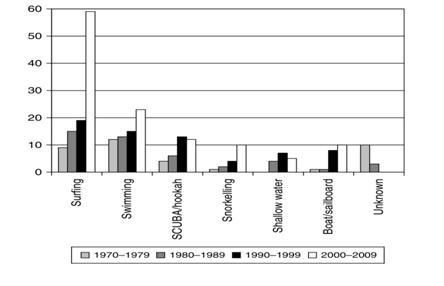
Figure.1 Above, demonstrates since the beginning of shark ecotourism, shark attacks on humans are least shown to increase with activities that are predominantly associated with ecotourism practices such as Scuba diving and snorkelling (West,201
Is diving teaching sharks to hunt humans?
Diving with sharks from the safety of a cage is a popular ecotourism activity in Australia, participants have the opportunity to interact with sharks, and likewise sharks have the opportunity to interact with humans (Lobel, 2008). With cage diving, members of the public are given the opportunity to view the sharks in their natural environment in scuba gear from a stainless-steel cage that is kept afloat by rafts and attached to a boat by a chain (Meyer et al, 2009). There is growing concern among the public that cage diving allows sharks to become accustomed to the presence of humans in their environment. The panic being, the next time a shark encounters a human in their environment, having been accustomed to them- will see them as a food source and target them based on this knowledge. Studies show there is no scientific evidence to support this.
Studies do indicate, sharks will not view humans as a source of prey simply because humans are present in their environment. Studies show, a shark will attack due to a number of reasons whereby not all attacks indicate a shark is hunting, instead they may be investigating their surroundings with their mouths or defending their territory by bumping or grazing humans in the water (Martin, 2007). Current scientific knowledge of shark attacks, show, a human, coupled with the act of swimming whilst wearing a wet suit, can mimic the look, sound and movement of a seal, a natural prey (Caldicoot et al, 2001). Scientists have also found, in most cases the attack is non- fatal suggesting they are ‘test biting’- implying, a possible misidentification where humans could be mistaken for seals. Furthermore, studies on shark agonistic behaviour show territorial threat displays towards humans at certain distances. Studies show, there was a critical distance to when sharks reacted and humans got too close, whereby the shark felt threatened (Martin, 2007). This demonstrates that, in the unlikely event of an attack on a human, it is unlikely related to learned behaviour, as the diver simply came too close to the shark. Therefore, sharks are not targeting divers as prey, but instead reacting to a threat in their environment (Ritter and Godknecht et al, 2001). This indicates, a shark is unlikely to be conditioned by divers, as sharks perceive a threat and not food (figure 2).
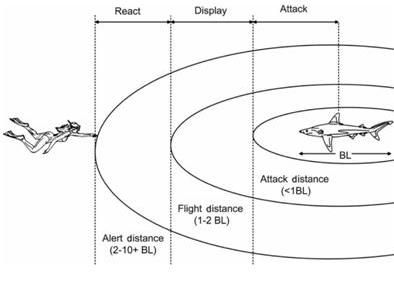
Figure. 2, above shows the critical distance barriers for when a shark reacts to a diver, performs a territorial threat display towards a diver, to the moment a shark is likely to attack a diver. This image indicates the shark is not hunting but instead feels threatened (Martin, 2007)
Is the method of attracting sharks, teaching sharks to hunt humans?
The most common method used to attract sharks to a dive site is known as ‘chumming’ and involves throwing chum (a burley mixture of southern blue fin tuna, offal and blood) in an area where sharks are located (Huveneers et al, 2013). Chumming attracts sharks to an area by stimulating their prey sensing receptors (olfactory receptors) and luring them to the site, by appealing to the senses and alerting them to prospect of prey (Clua et al,2010). Public opinion believes, chumming will allow sharks to develop behaviour that teaches them to view humans as a source of prey. However, studies show there is no scientific evidence to support this claim.
Scientific evidence does however suggest, it is plausible that sharks may begin to associate the presence of boats with food. Studies by Fitzpatrick et al (2010), show a link between the presence of sharks and boats which have released burley. Studies show, this impacts shark ecology more than human safety, whereby sharks may become dependent on this food source, effecting natural shark behaviour (figure 3). However, the study found no link to suggest sharks can directly associate humans with the release of burley, whereby humans, could be identified as a source of prey (Ritter and Amin,2014). Furthermore, the release of burley is not exclusive to shark ecotourism activities. In fact, fishing boats and fishing charters also use this method to attract fish and ecotourism practices simulate the same process as fishing boats which have used the same methods that have inadvertently attracted sharks for decades (Clua et al, 2010). Studies have found no link between a rise in shark attacks and the introduction of ecotourism activities which mimic this same process (Meyer et al, 2009). However, there are misconceptions surrounding shark attraction in Australia, as not all ecotourism boats use this method of ‘chumming’. In Australia, Adventure Bay Charters, lure great white sharks to a dive site by acoustic means. Without chumming, irregularly pulsed signals attract sharks to a low frequency sound, and then swim over to investigate (Myrberg et al, 1969). Since acoustic methods, do not produce the same results seen with sharks and boats, this indicates current methods of shark attraction- at least in Australia, does not allow any causal opportunity for sharks to associate divers with the presence of food. With no food to influence associative learning, it is unlikely sharks will relate food with humans.
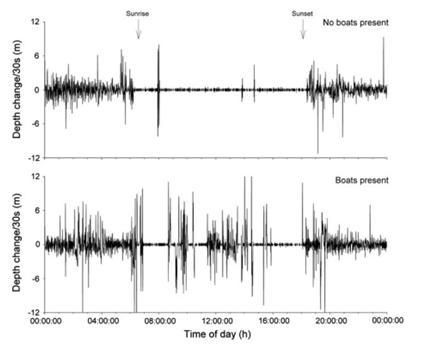
Figure 3, above image shows the results for a study conducted by Fitzpatrick et al (2010) noting changes in behaviour of reef sharks when boats were present and when boats were not present, suggesting sharks may associate boats with the presence of food and become dependent on this food source.
Conclusion and recommendations
There is strong scientific evidence that the introduction of ecotourism has not led to conditioning of sharks. There is no scientific evidence to suggest that any activities regarding ecotourism practices such as shark diving, or viewing and the location of a site can, or even do, contribute to the specifics regarding the conditioning of sharks Therefore, these activities have no current potential to teach sharks to hunt humans. However, there is scientific evidence to suggest, in certain situations, sharks do have the potential to develop associative learning and can associate food with an object such as a boat. Studies show, it is not impossible that chumming can influence differing behaviour with boats and the presence of food. However, this behaviour poses an ecological risk to sharks causing food dependence, rather than a risk to humans. Current scientific evidence indicated shark behaviour and boats does not lead to humans being perceived as food. However, sharks are dangerous, territorial and naturally aggressive animals and to air on the side of caution, to minimise impacts on both sharks and humans, the practice of chumming should be avoided. Acoustic attraction, along with the viewing of sharks from a safe distance is strongly recommended, as it will also decrease the risk that divers will experience attack phenomenon known as test biting, territorial attacks (related to territorial threat displays) OR prey misidentification. With these recommendations in mind, it is hoped the public will shift focus away from misconceptions surrounding sharks and focus on the much-needed preservation and conservation of sharks instead.
And… there you have it! The proper scientific evidence regarding sharks, shark ecotourism and all of the myths that go with it! No more bull shark!
References
Bres, M.,” The behaviour of sharks”. Reviews in Fish Biology and Fisheries, vol. 3, no. (2), pp. 133-159, 1993
Buzzacott, P. “An estimate of the risk of fatal shark attack whilst diving in Western Australia”, 2005
Caldicott, D. G., Mahajani, R., & Kuhn., “The anatomy of a shark attack: a case report and review of the literature”. Injury, vol. 32, no. (6), pp. 445-453,2001
Clua, E., Buray, N., Legendre, P et al., “Behavioural response of sicklefin lemon sharks Negaprion acutidens to underwater feeding for ecotourism purposes”. Marine Ecology Progress Series, vol. 414, pp. 257-266, 2010
Cubero‐Pardo, P., Herrón, P., & González‐Pérez.,”Shark reactions to scuba divers in two marine protected areas of the Eastern Tropical Pacific” Aquatic Conservation: Marine and Freshwater Ecosystems, vol. 21, no. (3), pp. 239-246, 2011
Fitzpatrick, R., Abrantes, K. G., Seymour, J., & Barnett, A, “Variation in depth of whitetip reef sharks: does provisioning ecotourism change their behaviour?”. Coral Reefs, vol, 30 no. (3), pp. 569-577. 2010
Huveneers, C., Rogers, P. J., Beckmann, C et al.,. “The effects of cage-diving activities on the fine-scale swimming behaviour and space use of white sharks”. Marine biology,vol. 160, no. (11), pp. 2863-287, 2013
Lobel, P. S., “Diver Eco-Tourism and the Behavior of Reef Sharks and Rays – an Overview”, 2008
Martin, R. A., “A review of shark agonistic displays: comparison of display features and implications for shark–human interactions”, Marine and Freshwater Behaviour and Physiology, vol. 40, no. (1), pp. 3-34, 2007
Martin, R. A., Rossmo, D. K., & Hammerschlag, N., “Hunting patterns and geographic profiling of white shark predation”. Journal of Zoology, vol.279 no. (2), pp. 111-118, 2009
Meyer, Carl G., et al. “Seasonal cycles and long-term trends in abundance and species composition of sharks associated with cage diving ecotourism activities in Hawaii.” Environmental Conservation, vol. 36, pp. 02, 2009
Myrberg Jr, A. A., Banner, A., & Richard, J. D. (1969). “Shark attraction using a video-acoustic system” Marine Biology, vol. 2 no. (3) ,pp. 264-276, 1969
Ritter, E. K., & Amin., “Are Caribbean reef sharks, Carcharhinus perezi, able to perceive human body orientation?”, Animal cognition, vol. 17, no. (3), pp. 745-753, 2014
Ritter, E. K., & Godknecht, A. J., “Agonistic displays in the blacktip shark (Carcharhinus limbatus)”. Copeia, vol. 2000 no. (1), pp. 282-284, 2000
West, J. G., ”Changing patterns of shark attacks in Australian waters”. Marine and Freshwater Research, vol. 62, no. (6), pp. 744-754, 2011
http://adventurebaycharters.com.au/shark-cage-diving-with-great-whites/ Accessed, August 14th 2014
Like what we do at The AIMN?
You’ll like it even more knowing that your donation will help us to keep up the good fight.
Chuck in a few bucks and see just how far it goes!
Your contribution to help with the running costs of this site will be gratefully accepted.
You can donate through PayPal or credit card via the button below, or donate via bank transfer: BSB: 062500; A/c no: 10495969

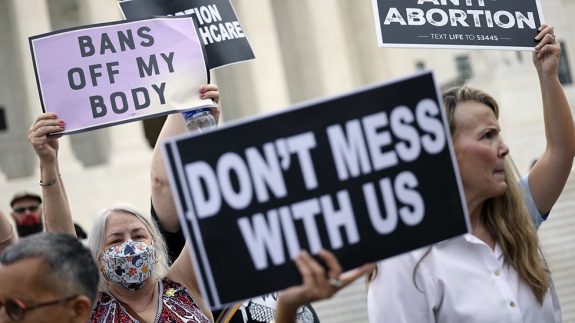
 Trying to make sense of it all, I finished pumping my milk and wander into my kitchen in a daze. Clasping the milk in one hand and reading stories of the US injustice in another, my hand suddenly slips and 160 ml of milk tuples onto the floor. I stop in silence as I watch it helplessly fall. There’s no use crying over spilt milk, unless of course it’s breastmilk and everybody knows that. Except, I didn’t cry because I know there is plenty more where it came from, my freezer is stacked sky high, in fact there’s 20 more litres of it neatly sandwiched in the freezer, taking up an entire freezer drawer. It was too poetic for words. So as the milk toppled off the bench onto the kitchen floor, I did not cry – I screamed. I stand and stare at it, a thick white puddle, but I’m enraged like I’ve never been before. I screamed because not a moment later it hit me all once-everything that I had been feeling. There on the floor in a thick white puddle was…my privilege. It was my privilege staring back at me from the milk soaked tiled floor. My cold ugly, white, brazened-Aussie (imperfect) yet universally sound-healthcare soaked privilege, on display for all. In perfect poetry I stood in my kitchen and screamed -160ml of milk 10,000 miles away from any injustice mothers face in the US today.
Trying to make sense of it all, I finished pumping my milk and wander into my kitchen in a daze. Clasping the milk in one hand and reading stories of the US injustice in another, my hand suddenly slips and 160 ml of milk tuples onto the floor. I stop in silence as I watch it helplessly fall. There’s no use crying over spilt milk, unless of course it’s breastmilk and everybody knows that. Except, I didn’t cry because I know there is plenty more where it came from, my freezer is stacked sky high, in fact there’s 20 more litres of it neatly sandwiched in the freezer, taking up an entire freezer drawer. It was too poetic for words. So as the milk toppled off the bench onto the kitchen floor, I did not cry – I screamed. I stand and stare at it, a thick white puddle, but I’m enraged like I’ve never been before. I screamed because not a moment later it hit me all once-everything that I had been feeling. There on the floor in a thick white puddle was…my privilege. It was my privilege staring back at me from the milk soaked tiled floor. My cold ugly, white, brazened-Aussie (imperfect) yet universally sound-healthcare soaked privilege, on display for all. In perfect poetry I stood in my kitchen and screamed -160ml of milk 10,000 miles away from any injustice mothers face in the US today.











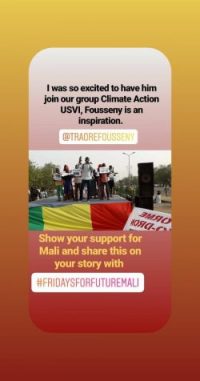 This is what I heard. Fousseny is from Bamako, Mali West Africa. In 2019 Fousseny Traoré led the
This is what I heard. Fousseny is from Bamako, Mali West Africa. In 2019 Fousseny Traoré led the 